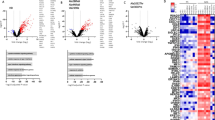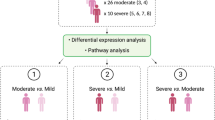Abstract
Melioidosis is a severe infection caused by the flagellated bacterium Burkholderia pseudomallei. The nonsense polymorphism TLR51174C>T is associated with improved outcome in Thais with melioidosis. We hypothesized that other TLR5 variants may modulate the host response and determine outcome in melioidosis. We genotyped 12 TLR5 variants selected de novo from the HapMap database and examined the association of each with cytokines induced by flagellin stimulation of whole blood from healthy Thai subjects. We found a blunted cytokine response for three related markers that were in linkage disequilibrium (LD) with a non-synonymous variant, TLR51846T>C. Carriers of TLR51846T>C had broadly impaired cytokine responses induced by flagellin. TLR51846T>C was associated with protection against death in melioidosis patients (odds ratio: 0.62, 95% confidence interval: 0.42–0.93, P=0.021). We observed no impairment in TLR51846C-dependent nuclear factor κB activation, however, suggesting an alternative mechanism for the effect. We found that TLR51846T>C was in strong LD with TLR51174C>T. Many of the blunted cytokine responses observed and the association of TLR51846T>C with survival in melioidosis patients may be attributable to TLR51174C>T, but we could not exclude an independent effect of TLR51846T>C. These data identify novel associations for TLR51846T>C, enhance our understanding of TLR5 genetic architecture in Thais and highlight the role of TLR5 in melioidosis.
This is a preview of subscription content, access via your institution
Access options
Subscribe to this journal
Receive 6 digital issues and online access to articles
$119.00 per year
only $19.83 per issue
Buy this article
- Purchase on Springer Link
- Instant access to full article PDF
Prices may be subject to local taxes which are calculated during checkout





Similar content being viewed by others
Accession codes
References
Takeda K, Kaisho T, Akira S . Toll-like receptors. Annu Rev Immunol 2003; 21: 335–376.
O'Neill LA, Bowie AG . The family of five: TIR-domain-containing adaptors in Toll-like receptor signalling. Nat Rev Immunol 2007; 7: 353–364.
Mogensen TH . Pathogen recognition and inflammatory signaling in innate immune defenses. Clin Microbiol Rev 2009; 22: 240–273.
Liu L, Botos I, Wang Y, Leonard JN, Shiloach J, Segal DM et al. Structural basis of toll-like receptor 3 signaling with double-stranded RNA. Science 2008; 320: 379–381.
Jin MS, Kim SE, Heo JY, Lee ME, Kim HM, Paik SG et al. Crystal structure of the TLR1-TLR2 heterodimer induced by binding of a tri-acylated lipopeptide. Cell 2007; 130: 1071–1082.
Park BS, Song DH, Kim HM, Choi BS, Lee H, Lee JO . The structural basis of lipopolysaccharide recognition by the TLR4-MD-2 complex. Nature 2009; 458: 1191–1195.
Zhao Y, Yang J, Shi J, Gong YN, Lu Q, Xu H et al. The NLRC4 inflammasome receptors for bacterial flagellin and type III secretion apparatus. Nature 2011; 477: 596–600.
Yoon SI, Kurnasov O, Natarajan V, Hong M, Gudkov AV, Osterman AL et al. Structural basis of TLR5-flagellin recognition and signaling. Science 2012; 335: 859–864.
Hawn TR, Verbon A, Lettinga KD, Zhao LP, Li SS, Laws RJ et al. A common dominant TLR5 stop codon polymorphism abolishes flagellin signaling and is associated with susceptibility to legionnaires' disease. J Exp Med 2003; 198: 1563–1572.
Hayashi F, Smith KD, Ozinsky A, Hawn TR, Yi EC, Goodlett DR et al. The innate immune response to bacterial flagellin is mediated by Toll-like receptor 5. Nature 2001; 410: 1099–1103.
Andersen-Nissen E, Smith KD, Strobe KL, Barrett SL, Cookson BT, Logan SM et al. Evasion of Toll-like receptor 5 by flagellated bacteria. Proc Natl Acad Sci USA 2005; 102: 9247–9252.
Smith KD, Andersen-Nissen E, Hayashi F, Strobe K, Bergman MA, Barrett SL et al. Toll-like receptor 5 recognizes a conserved site on flagellin required for protofilament formation and bacterial motility. Nat Immunol 2003; 4: 1247–1253.
Wiersinga WJ, Currie BJ, Peacock SJ . Melioidosis. N Engl J Med 2012; 367: 1035–1044.
Wiersinga WJ, van der Poll T, White NJ, Day NP, Peacock SJ . Melioidosis: insights into the pathogenicity of Burkholderia pseudomallei. Nat Rev Microbiol 2006; 4: 272–282.
Limmathurotsakul D, Peacock SJ . Melioidosis: a clinical overview. Br Med Bull 2011; 99: 125–139.
Wiersinga WJ, Wieland CW, Dessing MC, Chantratita N, Cheng AC, Limmathurotsakul D et al. Toll-like receptor 2 impairs host defense in gram-negative sepsis caused by Burkholderia pseudomallei (Melioidosis). PLoS Med 2007; 4: e248.
Friedland JS, Suputtamongkol Y, Remick DG, Chaowagul W, Strieter RM, Kunkel SL et al. Prolonged elevation of interleukin-8 and interleukin-6 concentrations in plasma and of leukocyte interleukin-8 mRNA levels during septicemic and localized Pseudomonas pseudomallei infection. Infect Immun 1992; 60: 2402–2408.
West TE, Chantratita N, Chierakul W, Limmathurotsakul D, Wuthiekanun V, Myers ND et al. Impaired TLR5 functionality is associated with survival in melioidosis. J Immunol 2013; 190: 3373–3379.
Grossman SR, Andersen KG, Shlyakhter I, Tabrizi S, Winnicki S, Yen A et al. Identifying recent adaptations in large-scale genomic data. Cell 2013; 152: 703–713.
Cooper GM, Stone EA, Asimenos G, Green ED, Batzoglou S, Sidow A . Distribution and intensity of constraint in mammalian genomic sequence. Genome Res 2005; 15: 901–913.
West TE, Chierakul W, Chantratita N, Limmathurotsakul D, Wuthiekanun V, Emond MJ et al. Toll-like receptor 4 region genetic variants are associated with susceptibility to melioidosis. Genes Immun 2012; 13: 38–46.
Abecasis GR, Auton A, Brooks LD, DePristo MA, Durbin RM, Handsaker RE et al. An integrated map of genetic variation from 1092 human genomes. Nature 2012; 491: 56–65.
Wu JF, Chen CH, Ni YH, Lin YT, Chen HL, Hsu HY et al. Toll-like receptor and hepatitis B virus clearance in chronic infected patients: a long-term prospective cohort study in Taiwan. J Infect Dis 2012; 206: 662–668.
Zeng HM, Pan KF, Zhang Y, Zhang L, Ma JL, Zhou T et al. Genetic variants of toll-like receptor 2 and 5, helicobacter pylori infection, and risk of gastric cancer and its precursors in a chinese population. Cancer Epidemiol Biomarkers Prev 2011; 20: 2594–2602.
Dhiman N, Ovsyannikova IG, Vierkant RA, Ryan JE, Pankratz VS, Jacobson RM et al. Associations between SNPs in toll-like receptors and related intracellular signaling molecules and immune responses to measles vaccine: preliminary results. Vaccine 2008; 26: 1731–1736.
Merx S, Zimmer W, Neumaier M, Ahmad-Nejad P . Characterization and functional investigation of single nucleotide polymorphisms (SNPs) in the human TLR5 gene. Hum Mutat 2006; 27: 293.
Mizel SB, West AP, Hantgan RR . Identification of a sequence in human toll-like receptor 5 required for the binding of Gram-negative flagellin. J Biol Chem 2003; 278: 23624–23629.
Andersen-Nissen E, Smith KD, Bonneau R, Strong RK, Aderem A . A conserved surface on Toll-like receptor 5 recognizes bacterial flagellin. J Exp Med 2007; 204: 393–403.
Adzhubei IA, Schmidt S, Peshkin L, Ramensky VE, Gerasimova A, Bork P et al. A method and server for predicting damaging missense mutations. Nat Methods 2010; 7: 248–249.
Yuan HY, Chiou JJ, Tseng WH, Liu CH, Liu CK, Lin YJ et al. FASTSNP: an always up-to-date and extendable service for SNP function analysis and prioritization. Nucleic Acids Res 2006; 34 (Web Server issue): W635–W641.
Tamura K, Peterson D, Peterson N, Stecher G, Nei M, Kumar S . MEGA5: molecular evolutionary genetics analysis using maximum likelihood, evolutionary distance, and maximum parsimony methods. Mol Biol Evol 2011; 28: 2731–2739.
Acknowledgements
We acknowledge the support of the staff and patients at Sappasithiprasong Hospital and Mahidol-Oxford Tropical Medicine Research Unit; DNA extraction by Premjit Amornchai, Aunchalee Thanwisai, and Malinee Oyuchua; and assistance generating immuno-assays from Mark Wurfel.
This work was supported by the Wellcome Trust (087769/Z/08/Z to NC); the NIHR Cambridge Biomedical Research Centre (to SJP); National Institutes of Health awards (K08HL094759 and R01HL113382 to TEW) and by the Doris Duke Charitable Foundation (to TEW).
Author information
Authors and Affiliations
Corresponding author
Ethics declarations
Competing interests
The authors declare no conflict of interest.
Additional information
Supplementary Information accompanies this paper on Genes and Immunity website
Rights and permissions
About this article
Cite this article
Chantratita, N., Tandhavanant, S., Myers, N. et al. Screen of whole blood responses to flagellin identifies TLR5 variation associated with outcome in melioidosis. Genes Immun 15, 63–71 (2014). https://doi.org/10.1038/gene.2013.60
Received:
Revised:
Accepted:
Published:
Issue Date:
DOI: https://doi.org/10.1038/gene.2013.60
Keywords
This article is cited by
-
In vitro passage alters virulence, immune activation and proteomic profiles of Burkholderia pseudomallei
Scientific Reports (2020)
-
Effect of temperature on Burkholderia pseudomallei growth, proteomic changes, motility and resistance to stress environments
Scientific Reports (2018)
-
Melioidosis
Nature Reviews Disease Primers (2018)
-
Functional analysis of bovine TLR5 and association with IgA responses of cattle following systemic immunisation with H7 flagella
Veterinary Research (2015)



